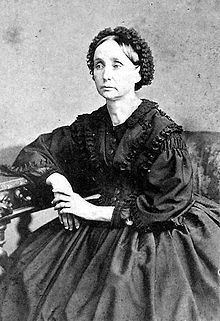Religion Roman Catholic Role 1816–1867 | Name Maria of | |
 | ||
Consort 27 January 1837 – 22 May 1859 Born 31 July 1816Vienna, Austrian Empire ( 1816-07-31 ) Burial Basilica of Santa Chiara, Naples Issue Prince Louis, Count of TraniPrince Albert Maria, Count of CastrogiovanniPrince Alfonso, Count of CasertaMaria Annunciata, Archduchess Charles Louis of AustriaMaria Immaculata, Archduchess Karl Salvator of AustriaPrince Gaetan, Count of GirgentiPrince Giuseppe, Count of LuceraMaria Pia, Duchess of ParmaPrince Vincenzo, Count of MelazzoPrince Pasquale, Count of BariPrincess Maria Immacolata, Countess of BardiPrince Januarius, Count of Caltagirone Died August 8, 1867, Albano Laziale, Italy Children Princess Maria Annunciata of Bourbon-Two Sicilies Parents Princess Henrietta of Nassau-Weilburg, Archduke Charles, Duke of Teschen House House of Bourbon, House of Habsburg Similar People Ferdinand II of the Two Sicili, Princess Maria Annuncia, Princess Henrietta of Nassau‑Weilburg, Maria Isabella of Spain, Archduke Karl Ludwig of | ||
Maria Theresa of Austria (Maria Theresia Isabella; 31 July 1816 – 8 August 1867) was the second wife of Ferdinand II of the Two Sicilies. She was the eldest daughter of Archduke Charles, Duke of Teschen and Henrietta of Nassau-Weilburg.
Contents

Her paternal grandparents were Leopold II, Holy Roman Emperor and Infanta Maria Luisa of Spain. Her maternal grandparents were Frederick William of Nassau-Weilburg (1768–1816) and his wife Burgravine Louise Isabelle of Kirchberg.
Maria Theresa was Princess-Abbess of the Theresian Royal and Imperial Ladies Chapter of the Castle of Prague (1834-1835).
Queen
On 27 January 1837, Maria Theresa married Ferdinand II of the Two Sicilies. The bride was almost twenty-one years old and the groom twenty-seven.
Queen Maria Theresa is described as badly dressed and did not answer to the ideal of a regal person: she disliked her public role and life at court and preferred to confine herself to her private rooms dedicated to needlework and her children. She had a good relationship to both her spouse and her stepson Francis: her stepson respected her and she used to demonstratively call him her son. Maria Theresa was interested in politics: she is known to have acted as the king's advisor and to have influenced him to be strict, and when she could not be present at the reception of officials and wished to hear the conversation, she listened to the talk behind the door. She nursed Ferdinand on his death bed.
Queen Dowager
At the death of her spouse, she intended to continue her political activity by being the advisor to her stepson Francis, the new monarch. Francis was willing, and her authoritarian policy has been considered to contribute to the public discontent which led to the abolishment of the Kingdom of Naples. Francis' spouse Maria Sophie of Bavaria, however, disputed her influence and Francis had a difficult position in the conflict between his wife and stepmother, without being able to satisfy either. Maria Sophia informed Francis about a plot created by Maria Theresa with the attempt to put the biological son of Maria Theresa on the throne, but Francis chose to believe Maria Theresa when she swore her innocence. It was not until the revolts against the monarchy had already begun that Francis decided to listen to the advice of his wife rather than his stepmother. Maria Theresa was among the first to leave Naples during the revolt: first to Gaeta with her children and advisors, and then to Rome. She resided in the same palace that Francis and Maria Sophia would use when they arrived. She died from cholera, nursed by her stepson Francis, who mourned her greatly.
